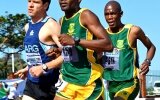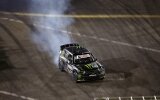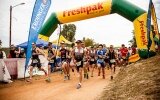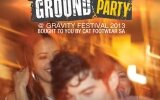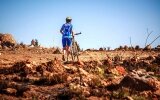- Magazine
- #readityourway
- Weekly Stories
- #shareyourstory
-
Adventure
- Abroad Travelling
- Africa Travelling
- Events
- Expos & Shows
- Festivals
- Fishing
- Free Diving
- Gliding
- Horse Riding
- Inspiring People
- Islands Travelling
- Kite/Windsurfing
- Motorbiking
- Motorised Water Sports
- Mountaineering
- Mountain Biking
- Off-road 4x4
- Off-road Motorbiking
- Paddling
- Performance Driving
- Photography
- Rock Climbing
- Rollerblading
- Sailing
- Scuba Diving
- Skateboarding
- Skydiving
- Snowboarding & Skiing
- Surfing
- Swimming
- Trail Running
- Wakeboarding
- Waveski Surfing
-
Sport
- Adventure Racing
- Fishing
- Free Diving
- Gliding
- Health & Fitness
- Horse Riding
- Inspiring People
- Kite/Windsurfing
- MMA
- Motorbiking
- Mountain Biking
- Multi-sport
- Off-road 4x4
- Off-road Motorbiking
- Paddling
- Performance Driving
- Photography
- Road Cycling
- Road Running
- Rock Climbing
- Rollerblading
- Sailing
- Scuba Diving
- Skateboarding
- Skydiving
- Snowboarding & Skiing
- Surfing
- Swimming
- Rugby
- Trail Running
- Triathlon
- Wakeboarding
- Waveski Surfing
- Lifestyle
- Calendar
Field Trialling
Words: Gavin Goldblatt ǀ Photos: Rowan Stretton
Category:
Multi-sport
It was still dark and misty when we gathered in the valley, as the sun hadn't cleared the towering mountains to the east. People shook hands and hugged, shared flasks of coffee and hot chocolate, cracked jokes. The dogs did what dogs do, ran around, sniffed each other, came back for a pat, and went off again.
Finally the last person arrived and we hopped into the back of the waiting bakkies, eight people and eight dogs per bakkie, and headed up the mountain following the barely discernible ruts. The joking stopped, we all stood huddled with our backs to the biting wind, the dogs squeezed in-between our legs for a bit of extra warmth. The thermometer said 3°C, but it felt a lot colder in the wind. As the convoy ascended, the sun rose and we broke through the mist to a clear, cloudless and pale blue sky.
At the top of the mountain we discarded our top layers. It was going to be a glorious day and walking would quickly warm us up. The first two dogs were cast off, followed by the three judges and two handlers. The rest of the gallery hung back and watched the action unfolding, their dogs whining and pulling at their leashes as they watched the running dogs intently. The sun was already high and the frost had been burnt off the ankle-high rooigras, which stretched as far as the eye could see. The two dogs, a pointer and setter, ran up and down the steep slopes at 25 km an hour looking effortless, they could run all day at that pace.
Eight minutes after casting off, the setter dropped. One moment in full gallop, the next sliding on the ground as if he had been shot, turning as he slid along and keeping his nose into the wind and his head high, to show his handler where the birds were. The pointer came up behind, stopped and stood pointing out the setter, keeping its distance so as not to flush the birds. The setter's handler walked up to her dog, shotgun closed and ready, and bent down to tap the dog on the head. The dog leopard crawled forward 10 metres, the handler walking at his side, and then he dropped again as a greywing francolin flushed from in front of his nose. The shotgun, loaded with a blank, boomed as it was aimed straight up into the sky. The handler opened her gun, reloaded, bent down and touched the dog's head again so he could lead her to the next bird before their time was up and the next brace (pair of dogs) was cast off.
As we cleared a ridge, there in front of us was a table laid out with a white tablecloth, bearing coffee, tea, biscuits, and water for the dogs. Just after tea, as the first brace produced a covey of greywing, a lanner falcon dropped from a clear sky and slammed into one of the greywings, the impact audible from 200 m way. It was an explosion of feathers, just like a pillow that had burst, and the greywing dropped to the ground, dead. The lanner landed on it and with a beady yellow eye dared the dogs to approach.
The dogs were led off so they didn't disturb the feeding raptor and the trial continued. Two braces later, the dogs down cleared a ridge and ran into a herd of 70 blesbok. The buck could sense that the dogs weren’t interested in them, so they cantered off slowly, stopping at the top of a hill to watch the action down below.
Lunch miraculously appeared before us, as had the morning tea, and both main course and dessert were devoured sitting around an old concrete dam, out of the wind but in the sun, with the dogs sprawled next to us. Thereafter, it was another two hours of walking before afternoon tea, and then another two before the sun started to disappear and we climbed tiredly into the waiting bakkies. We headed down the mountain for a drink around a roaring fire, a warm shower, and a delicious supper of venison stew. Finally, under the duvet for a dreamless sleep and a 5 a.m. wake-up call to do it all over again.
About the sport
This is what field trialling is about. It is a sport for nature lovers, dog lovers, conservationists, and hunters. Although it is still small in South Africa, it has a large following in Europe and the USA. In some of the Scandinavian countries, there are more registered field trial dogs than there are human inhabitants, and Italy, Spain, and France don’t lag far behind.
Trialling and conservation
Field triallers are all ardent conservationists because without a healthy eco-system there are no birds, and without birds there is no sport. No birds or other animals are harmed during trialling or training and many of the triallers are actively involved in conservation activities and conservation research.
Looking back
It traces its roots back to the early 1600s when King Louis XII of France, who was a passionate pointer breeder, compared dogs against one another to make sure he bred only from the best. After he sent a pair of dogs as a wedding present to James 1, the breed was introduced to England and field trialling gradually became a sport in its own right, separate from falconry and shooting.
Field trialling is also one of the oldest sports in South Africa, with the first trial held on Jan Smuts's farm in Irene in 1908. The sport became democratised, especially here in South Africa where we are fortunate to have an abundance of birds and lands to run our dogs.
The South African Field Trial Club was started in 1907, with the clear goal of identifying the dog that best produced birds for the gun. We are traditionalists in this regard, as many of the field trial associations around the world have gradually increased their focus on form over function.
Breeds
Field trials are essentially breed tests to choose the best dogs for breeding purposes. However, they are a lot more than that, as a lot of training is required to ensure the dogs perform at their best, and to do that requires a lot of skill.
In South Africa, only pointers, German short haired pointers, English and Irish setters, and Brittanies have gene pools large and strong enough to ensure the physical and mental health and ability necessary for trialling. Even in these breeds, many are bred for show and their working ability and as a result, the dog's health has been bred out, so it's essential to carefully evaluate the breeding when choosing a puppy.
Who can participate
Physically, trialling is not too demanding, but you need to be able to walk 20 km per day through the mountains, so contestants range in age between 10 and 70. It is a great family sport and it's not unusual to see three generations of a family competing. Many of the competitors have also represented their province or country in other sports, ranging from gymnastics to rugby, to trail running and mountain biking.
Trial format
Trials are specifically designed to emulate natural hunting conditions as closely as possible. They are run entirely on natural game under normal hunting conditions and always run over fresh ground. As one would do when hunting, judges try to make the best of the prevailing climatic conditions or wind direction.
The judging party comprises three judges, one of whom is appointed as the chief judge. The field steward is effectively in charge of all logistical issues and the navigation through the venue for optimum results.
Competing dogs are drawn in braces on a completely random basis, but no two dogs will be drawn together that belong to the same handler. The time allocated for braces is determined by the judging panel in consultation with the field steward and is normally based on logistical issues, cover available, and the quantity of game anticipated. The brace duration is, on average, about 10 to 20 minutes. Our trials are designed to afford a championship dog about one to one-and-a-half hours of exposure to the panel of judges over the course of the trial.
Each handler is required to carry a gun, which is supplied by the host club. Since retrieving is not judged, the game is not shot, merely saluted with black powder blanks. In fact, a dog snapping at a bird is a cardinal sin and grounds for immediate disqualification. Once the dogs are cast off, the handlers proceed on foot behind their dogs. The other contestants and gallery of spectators also proceed on foot behind the two contestants, under the control of the field steward. Once the time allocated to each brace has elapsed, they are called up and the next brace is cast off. This is repeated until the entire field has run, which is termed a round. At the end of each round, the performance of all dogs is discussed by the judges and the dogs that have committed eliminating faults, such as chasing game, breaking to shot, and so on, are excluded from all subsequent draws. Dogs that are not eliminated go forward into subsequent rounds and are redrawn with other dogs until they are eliminated or until a final judging decision is reached at the end of the two-day trial.
At the end of the trial, the aim of the judges is to decide that if the exercise could be repeated, which few dogs, in order of merit, they would choose to hunt over in that terrain, under those circumstances, for those days. It’s as simple as that. All judging decisions are reached by consensus.
So if you're a nature lover, dog lover, conservationist or hunter, and looking for a new activity to try your hand at, then how about field trialling? There are active clubs in Gauteng, Natal, and the Western and Eastern Cape.
To find out more or how to get involved in field trialling, visit www.wcfieldtrialclub.co.za
Related content
|
Stand up to pedal downhill
|
Blown away by the Gravity Adventure Festival!
|
|
|
|
|
|
|
|

